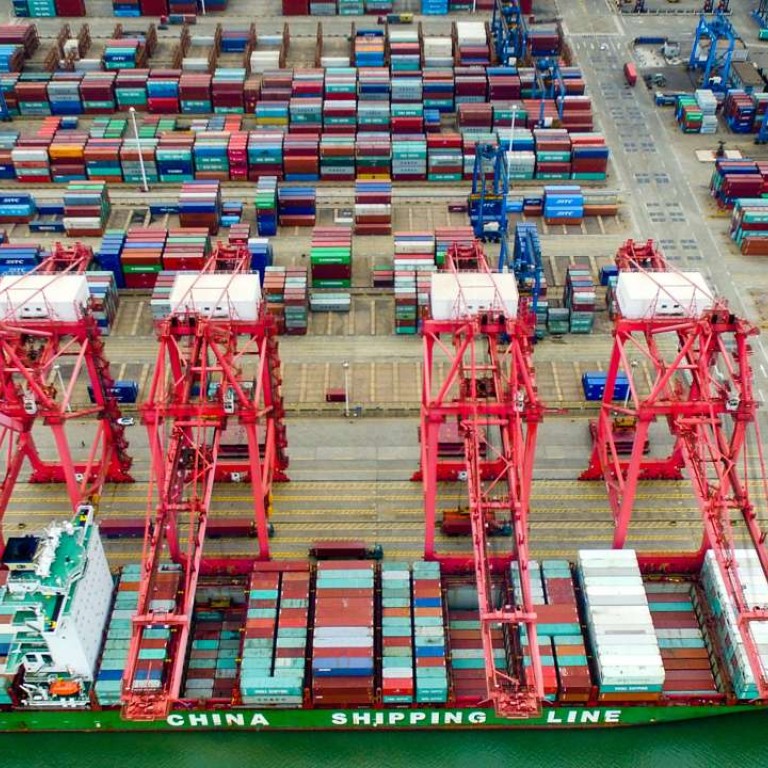
Belt and Road projects offer huge opportunities, but also present sources of risk for Chinese banks
Poor commercial prospects of lending in key countries along the trade routes could pose a serious threat to banks and creditor countries
China’s flagship “One Belt, One Road” initiative could be creating new asset quality dangers for the country’s financial system, Fitch Ratings has warned in a new study, adding there were also risks for the countries along the planned routes involved in the economic development project.
The Belt and Road involves hard and soft infrastructure investment in more than 60 countries in central and south East Asia, Africa and Europe, with the simple intention of boosting trade.
Funding for the project is coming from regional financial institutions such as the Asian Infrastructure Investment Bank, China’s Silk Road Fund, as well as Chinese policy and commercial banks.
According to Fitch’s estimates, total overseas lending (not just limited to Belt and Road-related projects) by Chinese banks in the first half of 2016 was worth almost US$1,200 billion, two thirds of which were provided by commercial banks.
But even for the Chinese banks with vast balance sheets, the ratings agency warns the potential risk defaults on Belt and Road loans is high.

China’s manufacturing and construction sectors currently account for the greatest number of non-performing Chinese loans, particularly heavy industry requiring hefty infrastructure investment.
“The One Belt, One Road project – with its focus on infrastructure lending – is now exporting the model that caused the current build-up of bad debt for banks domestically,” Jack Yuan, China financial institutions analyst at Fitch, and one of the authors of the report, told the South China Morning Post.
Chinese banks do not have a track record of allocating resources efficiently at home, especially in relation to infrastructure projects – and they are unlikely to have more success [doing it]overseas
The report also warns that because the Belt and Road is broadly seen as an attempt to raise Chinese influence overseas, genuine infrastructure needs and commercial logic could become secondary to political motivations when it comes to the selection of projects receiving funding.
“The initiative is a component of China’s efforts to expand its strategic international influence and a means of securing access to key commodities ... This subjugation of market forces means there is a heightened risk of projects proving unprofitable,” the report said.
Pansy Yau, deputy director for research at the Hong Kong Trade Development Council adds that commercial banks could, nonetheless, still source and benefit from finding attractive areas for investment within the overall blueprint.

Loans from bodies such as the Asian Infrastructure Investment Bank, which are likely to be worth a total US$100 billion, will nbe subject to different commercial pressures, as will lending from China’s three policy banks.
While commercial concerns are less of a factor for the policy banks, misallocation of lending by these banks could also pose a threat to stability.
The policy banks are doing the majority of the lending, but as they are funded by commercial banks, and any problems with the quality of the lending would affect the Chinese financial system as a whole
“The policy banks are doing the majority of the lending, but as they are funded by commercial banks, and any problems with the quality of the lending would affect the Chinese financial system as a whole,” said Yuam.
Failure to repay the loans to Chinese policy or commercial banks is also a risk for the governments of the countries receiving the investment, some of which have provided direct guarantees or real collateral to back their Belt and Road projects, which could raise lending recovery rates in the event of repayment difficulty.
The report notes that Laos, for example, has provided assets in the form of potash mines as collateral for a loan that will push up its public debt to GDP ratio by almost 60 percentage points, and that Kyrgyzstan’s debts to China’s Export Import Bank alone were worth almost 20 per cent of its GDP at as of the end of 2015.
Should the projects fail to deliver the anticipated returns, as looks perfectly plausible in many cases, the burden of repayments shift to the states themselves, and the threat to sovereign finances could be severe.

